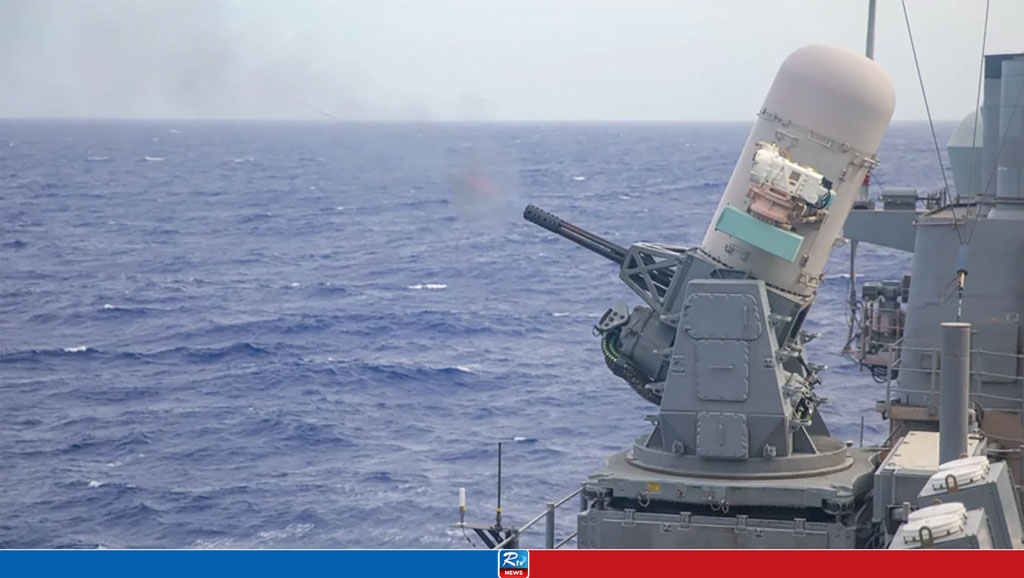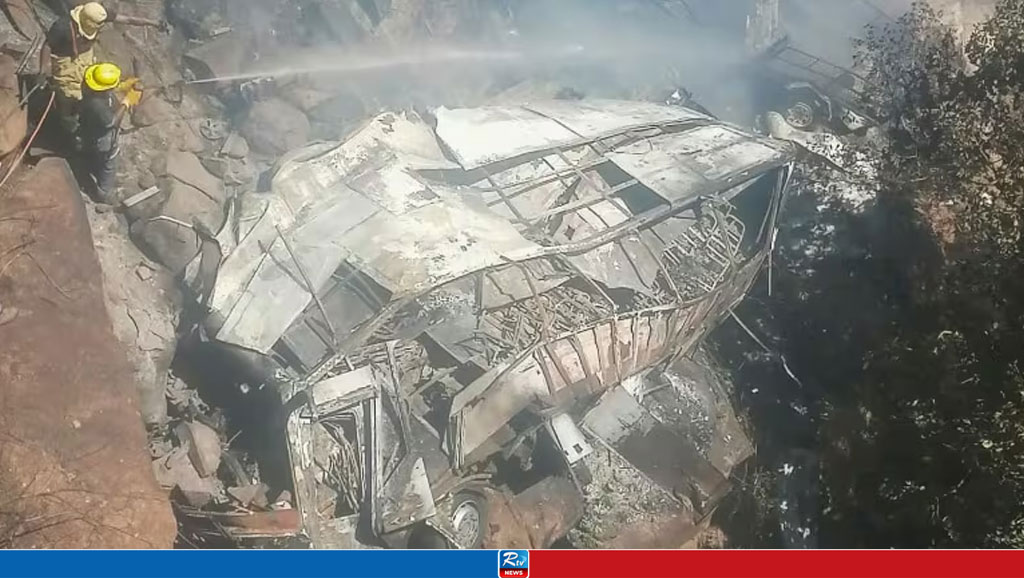US Navy used its ‘last line of defense’

A US warship’s destruction of an incoming Houthi missile in the Red Sea this week marks the first use in this conflict of an advanced weapons system dubbed the Navy’s “last line of defense.”
The Phalanx Close-In Weapon System (CWIS) was deployed by Navy destroyer the USS Gravely Tuesday night against what US officials said was a cruise missile that got as near as 1 mile to the ship – and therefore seconds from impact.
The automated Phalanx system features Gatling guns that can fire up to 4,500 20-millimeter rounds a minute, engaging projectiles or other targets at extremely close range.
“The Phalanx weapon system is a rapid-fire, computer-controlled, radar-guided gun that can defeat anti-ship missiles and other close-in threats on land and at sea,” manufacturer Raytheon says on its website page titled, “Last line of defense.”
US warships have defeated dozens of previous Houthi missile attacks using longer-range defenses, likely the Standard SM-2, Standard SM-6 and Evolved Sea Sparrow missiles, analysts say. Those defensive missiles engage their targets at ranges of 8 miles (about 12 kilometers) or more.
But on Tuesday night that didn’t happen for reasons that have not been revealed.
Tom Karako, director of the Missile Defense Project at the Center for Strategic and International Studies, said it was “concerning” that the Houthi missile got so close to a US warship.
“If it’s going at a pretty good clip, 1 mile translates to not very long in terms of time,” Karako said.
Analyst Carl Schuster, a former US Navy captain, said the Houthi missile, traveling at about 600 mph (965 kph), was likely about 4 seconds from hitting the US warship when it was destroyed by what was likely a 2- to 3-second burst of machine gun fire by the Gravely’s Phalanx system.
He noted that destroying an incoming missile at a 1-mile distance doesn’t necessarily prevent warships from being hit with debris.
“The missiles don’t evaporate when destroyed, they send out thousands of fragments and missile frame parts,” Schuster said. “The good news is that the lighter parts decelerate quickly, but large chunks can fly up to 500 meters (more than 500 yards).”
The closer the incoming missile is to the ship when destroyed, the more danger there is to the vessel, with larger chunks able to penetrate unarmored parts of the hull and superstructure from about 200 meters (more than 200 yards) out, Schuster said.
In a case of a subsonic cruise missile like that encountered by the Gravely on Tuesday, “depending on if the warhead detonates, debris size, missile flight angle and altitude at the time of missile destruction, about 2% of the debris might reach the ship,” he said.
Up to 70% of debris from missiles that travel at a faster speed, such as supersonic cruise missiles or ballistic missiles, would likely hit a warship after being engaged by the Phalanx, he said.
The Phalanx has a limited height range, so it may not even be able to engage ballistic missiles falling from above a warship, Schuster added.
Even with those caveats, the Phalanx is an important armament for the US Navy.
Since its introduction in 1980, it is now installed on all US Navy surface ships, and at least 24 US allies also use it, according to Raytheon, which notes the land-based version has seen combat before.
Whether it comes into further use in the current hostilities in the Red Sea remains to be seen. But the Iran-backed Houthis show no signs of slowing their attacks on commercial shipping and warships in the waters around their base in Yemen, which they claim are retaliation against Israel for its war in Gaza.
A day after the attack on the Gravely, US Central Command reported another US destroyer, the USS Carney, had shot down incoming anti-ship missiles and drones. And on Thursday, US forces shot down a Houthi drone over the Gulf of Aden and destroyed a surface drone in the Red Sea, it said.
Meanwhile, two ballistic missiles launched from Houthi-controlled areas of Yemen missed targets in the Red Sea, Central Command said.
Regional conflict
The attacks on Red Sea shipping are just some of the dozens that have been made by Iranian proxy groups in Yemen, Lebanon, Syria and Iraq since the war in Gaza erupted last October.
The deadliest of those for the US military occurred last Sunday, when a drone strike on a US outpost in Jordan killed three American soldiers. The US believes an umbrella group of militants called Islamic Resistance in Iraq was behind the attack.
President Joe Biden told reporters Tuesday he had made a decision about the US response to the strike, but declined to provide further details.
Options for the Biden administration could involve strikes on Iranian assets in the region — but striking inside Iran itself is highly unlikely, officials said, since Washington is not seeking a direct war with Tehran.
US officials told CNN this week there are signs Iran may be growing worried its proxies are taking the attacks on US interests too far, threatening to disrupt the global economy and significantly increasing the risk of a direct confrontation.
But some current and former US officials are skeptical that Iran will substantively change its tactics. One US military official based in the Middle East said Iran is “quite happy with how things are going.”
Source: CNN
Comments
Jacob Zuma barred from running in election

45 dead in South Africa bus crash, 8-year-old girl only survivor

World's most expensive cow sold for $4.3 million in Brazil

Turkey: Polls close in Erdogan's 'last election'

Italy is overtaking Germany as Europe's economic powerhouse

Lawmakers urge Biden to call out more Chinese biotech firms

Gaza death toll crosses 33,000


 Live Tv
Live Tv




